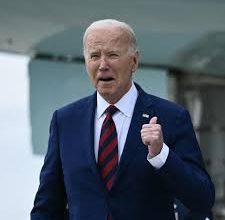
Have Saudi Arabia and Russia put a floor under the oil price ?
There’s a big question mark over whether Iran will agree to a just-announced Saudi-Russia oil deal. Even if it does, will a production freeze be enough to re-balance global supply and demand and help lift oil prices?
Officials from OPEC members Saudi Arabia, Qatar and Venezuela and non-OPEC Russia have agreed to freeze oil output at January levels, but the agreement could yet be meaningless as it’ll require the backing of the rest of OPEC, notably Iran.
The Brent oil price rose to its highest level in nearly two weeks at above $35 a barrel when news of the meeting broke. That rise was fuelled by hopes that Russia could persuade OPEC’s de facto leader Saudi Arabia to cut output.
When news of a deal to freeze output, not cut, arrived, the Brent oil price quickly slipped back to about $34 a barrel.
That’s because there are two problems with the deal. Firstly, it needs to be agreed by the rest of OPEC, including Iran, and secondly because global oil output in January was high and sustaining that level of production will do little to ease the glut of oil currently swamping the global markets.
OPEC crude oil production was higher in January than in December

Source: OPEC February monthly report
Russia’s involvement is important because it is an ally of Iran, but it is going to have difficulty persuading the OPEC member to hold back on production.
Iran is only just returning to the world oil market after Western powers lifted sanctions against the country in return for promises about its nuclear programme. Tension between the Sunni Saudi Arabia and Shiite Iran has also been heightened in recent months amid growing political tensions in the Middle East. The two countries are now deemed to be the power brokers in the region, but are politically opposed.
That’s made a possible OPEC deal on production cuts less likely.
Venezuela’s oil minister admitted the problem at the end of the meeting with Russia in Qatar. He said he’d be meeting with the Iranian and Iraqi oil ministers in Tehran to try and persuade them of the merits of the deal.
Brent oil rose on news of the talks in Qatar, but then dropped back when the result was announced

Source: Thomson Reuters
Oil prices had tumbled to below $30 a barrel in recent weeks, down from about $115 a barrel in June 2014, due to the oversupply in the market and concerns that an economic growth slowdown in China will do little to ease the situation. The market is not being helped by the US shale oil boom, which has left storage tanks there full to the brim just as the winter peak demand season comes to an end.
Saudi Arabia has been pumping oil in record amounts to try and protect its market share amid the surge in US oil production. That has caused oil prices to plummet, but is also putting an increasing number of US shale producers out of business as the costs of shale production tend to be higher than the cost of production in Saudi Arabia.
A new study by auditing and consulting firm Deloitte has found that roughly a third of oil producers are at “high risk” of going into bankruptcy this year as the low oil price hurts their access to cash and ability to cut debt.
However, the low oil prices are also damaging the national budgets of both Saudi Arabia and Russia, as well as the other OPEC members. The only OPEC producer set to benefit is Iran, which desperately needs the funds from oil exports that it has been denied for several years. It has said it wants to boost oil exports by 500,000 barrels a day, which isn’t going to help the world’s over-supply problem.
So there’s a big question over whether Iran can be persuaded to back an OPEC production freeze at a time it’s ramping up output.
What the world really needs if the global oil supply and demand situation is to be re-balanced quickly is production cuts, not freezes.
Global non-OPEC supply is expected to decline in 2016 as US production drops due to lower output from the shale fields. But not by nearly enough to rebalance markets.
OPEC’s February monthly report forecast that overall non-OPEC supply in 2016 would drop by just 0.7 million barrels a day from 2015 to 56.28 million barrels a day. Meanwhile, world oil demand is forecast to grow 1.25 million barrels a day. That’s not enough to re-balance the market and reduce the high level of stored oil and oil products hanging over the market in the short term.
There are real doubts as to whether this deal will get the wider OPEC support it needs, and whether it will be enough to put a floor underneath the oil price, let alone put it back on an upward course.
Saudi Arabia’s powerful minister Ali Al-Naimi left the Qatar meeting saying he hoped that oil producers inside and outside OPEC would adopt the output freeze, which he thought would be enough to stabilize oil prices. He added that the situation would be assessed “in the next few months” to see whether further steps were required to “stabilise and improve the market”.
“Several OPEC oil ministers agreed to freeze production at 11 Jan levels, which isn’t quite the ‘cut’ that oil bulls had been hoping for. Oh and it’s also contingent on other oil producing nations agreeing to the freeze, which Iran is unlikely to given has only just returned to the market after sanctions were lifted,” writes Mike van Dulken, head of research at Accendo Markets.
“With OPEC kingpin Saudi Arabia adding that it’s absolutely comfortable with current prices, it looks like yet another attempt to buoy the oil price with mere rhetoric. The problem is, we’re not fooled by that any more,” he adds.




